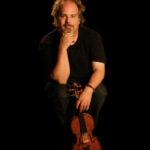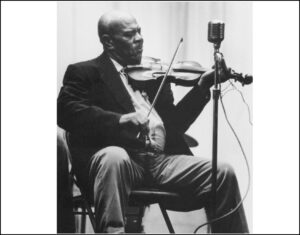One of the most fascinating parts of learning fiddle is how it varies from culture to culture, from region to region, from player to player. People might think they know about Irish fiddling but it varies quite a bit depending on county, and ultimately on the influences of individual players from each county.
On fiddle-online, we have a number of Irish concert/workshops representing different styles, including the legendary James Kelly, Liz Knowles, Alden Robinson and Grainne Brady. We also have a Tune Group of 12 Irish tunes and many regular workshop materials — see the bottom of this message for details. James Kelly’s online concert/workshop for fiddle-online presented a style he learned from growing up in Dublin. His father was a well-known fiddler and concertina player from County Clare who played in a band that was the precursor to the Chieftains, and their family home hosted countless great Irish musicians for sessions and stories. James himself is a prominent fiddler, having hosted an Irish TV show and having toured with the legendary bands Patrick Street and Planxty. Listen to James’s performance and stories, and learn two tunes from him, a jig and a reel. Click here for audio and signup info.
James Kelly’s online concert/workshop for fiddle-online presented a style he learned from growing up in Dublin. His father was a well-known fiddler and concertina player from County Clare who played in a band that was the precursor to the Chieftains, and their family home hosted countless great Irish musicians for sessions and stories. James himself is a prominent fiddler, having hosted an Irish TV show and having toured with the legendary bands Patrick Street and Planxty. Listen to James’s performance and stories, and learn two tunes from him, a jig and a reel. Click here for audio and signup info.
Liz Knowles has performed with Riverdance, played the soundtrack for the film “Michael Collins”, played with Martin Hayes Quartet, and tours worldwide with Open the Door for Three and other groups. We’re fortunate to have materials available to you from Liz’s online workshop (this one’s only 5 credits because it’s focused on the workshop and not a mini-concert). In this workshop, Liz teaches a jig, with plenty of chances for you to learn the notes, the ornamentation, bowing, variations, and even has two variations written out for you to work with. Click here for audio and details.
Alden Robinson is an American fiddler who studied traditional music in County Cork in Ireland, does solo tours and has played with several bands, including The Press Gang. He did two workshops for fiddle-online, one including a concert, and the other focusing on the interactive workshop. Learn a great jig in the one, and learn a slide (and what a slide is) in the other. Click here for info and audio about both of these offerings.
Grainne Brady is an Irish fiddle player from County Cavan in Ireland and currently based in Glasgow where she leads sessions and plays with Top Floor Taivers, string group The Routes Quartet, and Gaeilge/Gàidhlig supergroup LAS. Her concert and the tune she teaches feature original compositions she composed for an album that illustrates an Irish novel about a young woman who travels from Donegal to Scotland 100 years ago in search of a better life, and has to come to grips with many realities. Click here for audio and info.
Many other Irish tunes are available to you on fiddle-online via Ed’s workshop videos and our unique interactive sheet music, with self-repeating audio by phrase. Tune Group 5 is devoted to 12 popular Irish tunes, and you can explore triple tune workshops laid out in the Irish section of Ed’s regular workshop materials, including a group of tunes by Turlach O’Carolan, and various jigs, reels, hornpipes, waltzes, and a group of swingy Irish reels, which allow you to learn some great and challenging tunes at a reasonable pace.
In Ed’s Mixed Tunes and Topics you’ll find a number of Irish tunes taught and discussed — just look in the following topics: Tunes by Ear, Tunes for Ornamentation, D & Dm Jigs, Holiday Tunes, Spooky Tunes, Marches & Polkas, Slow Airs, and Flowing Tunes.
©2022 Ed Pearlman









